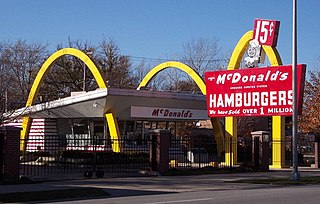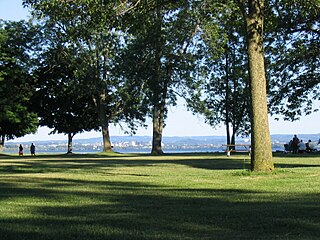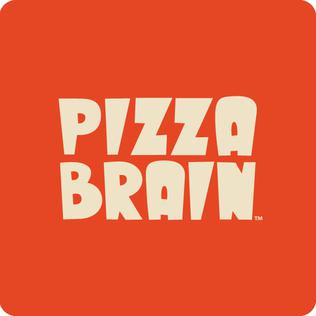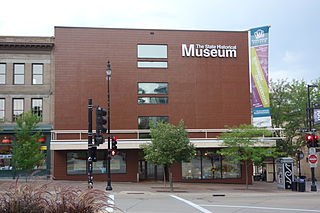 W
WAlexander & Baldwin Sugar Museum is located in the small sugarcane growing and milling community of Puʻunene, Hawaii, Kahului, Maui. The museum exhibits the history of Hawaiian sugarcane plantations and Alexander & Baldwin and its role in the sugarcane industry in Hawaii. The company itself continues in business and though it has diversified, it continues to produce sugarcane. The museum itself in the former mill manager's house.
 W
WCalifornia Citrus State Historic Park is an open-air museum in the state park system of California, United States, interpreting the historic cultural landscape of the citrus industry. The park’s museum exhibits and interpretive features share the story of the citrus industry's role in the history and development of Southern California, and is told through the experiences of the diverse migrant and immigrant groups who made it all possible. The California Citrus State Historic Park is in the city of Riverside in Riverside County, California, United States. The 248-acre (100 ha) park was established in 1993.
 W
WWilbur Chocolate is one of four brands manufactured by Cargill Cocoa & Chocolate North America. Most of the Wilbur brand products were produced in plants chocolate manufacturing company located in Lititz, Pennsylvania. Wilbur Chocolate was founded in Philadelphia in 1865 by Henry Oscar Wilbur and Samuel Croft. Cargill Cocoa & Chocolate NA produces hundreds of millions of pounds of chocolate and confectionery products a year. These ingredients are sold to food and candy manufactures across the Americas.
 W
WCopia: The American Center for Wine, Food & the Arts was a non-profit museum and educational center in downtown Napa, California, dedicated to wine, food and the arts of American culture. The center, planned and largely funded by vintners Robert and Margrit Mondavi, was open from 2001 to 2008. The 78,632-square-foot (7,305.2 m2) museum had galleries, two theaters, classrooms, a demonstration kitchen, a restaurant, a rare book library, and a 3.5-acre (1.4 ha) vegetable and herb garden; there it hosted wine and food tasting programs, exhibitions, films, and concerts. The main and permanent exhibition of the museum, "Forks in the Road", explained the origins of cooking through to modern advances. The museum's establishment benefited the city of Napa and the development and gentrification of its downtown.
 W
WThe Harland Sanders Café is a historic restaurant located in Corbin, Kentucky. Colonel Harland Sanders, the founder of Kentucky Fried Chicken, operated the restaurant from 1940 to 1956. Sanders also developed the famous KFC secret recipe at the café during the 1940s. It was added to the National Register of Historic Places on August 7, 1990.
 W
WThe Idaho Potato Museum is a museum devoted to the potato, located in Blackfoot, Idaho.
 W
WThe International Vinegar Museum is located at 500 Main Street in Roslyn, South Dakota. It is located in the former Roslyn Auditorium, a Depression-era brick building built in 1936 with funding from the Works Progress Administration, which is listed on the National Register of Historic Places. The museum bills itself as the first museum dedicated to the subject of vinegar, with exhibits in its manufacture and use. It is open from early June to Labor Day, and hosts an annual festival in late June.
 W
WThe Jell-O Gallery or Jell-O Museum is a museum in Le Roy, New York dedicated to exhibits about Jell-O. The museum is owned and operated by the Le Roy Historical Society.
 W
WThe Le Roy House and Union Free School are located on East Main Street in Le Roy, New York, United States. The house is a stucco-faced stone building in the Greek Revival architectural style. It was originally a land office, expanded in two stages during the 19th century by its builder, Jacob Le Roy, an early settler for whom the village is named. In the rear of the property is the village's first schoolhouse, a stone building from the end of the 19th century.
 W
WThe Maritime & Seafood Industry Museum (MSIM) was established in 1986 to preserve and interpret the maritime history and heritage of Biloxi and the Mississippi Gulf Coast. It accomplishes this mission through an array of exhibits on shrimping, oystering, recreational fishing, wetlands, managing marine resources, charter boats, marine blacksmithing, wooden boat building, net-making, catboats/Biloxi skiff, shrimp peeling machine and numerous historic photographs and objects. The Wade Guice Hurricane Museum within the museum, featuring 1,400 square feet (130 m2) of exhibit space and a state of the art theatre. The Museum has brought life to local maritime history and heritage by replicating two 65-ft two-masted Biloxi Schooners.
 W
WThe McDonald's #1 Store Museum was housed in a replica of the former McDonald's restaurant in Des Plaines, Illinois, opened by Ray Kroc in April 1955. The company usually refers to this as The Original McDonald's, although it is not the first McDonald's restaurant but the ninth; the first was opened by Richard and Maurice McDonald in San Bernardino, California in 1940, while the oldest McDonald's still in operation is the third one built, in Downey, California, which opened in 1953. However, the Des Plaines restaurant marked the beginning of future CEO Kroc's involvement with the firm. It opened under the aegis of his franchising company McDonald's Systems, Inc., which became McDonald's Corporation after Kroc purchased the McDonald brothers' stake in the firm.
 W
WThe Museum of Food and Drink (MOFAD) is a New York City educational non-profit and museum that seeks to change the way people think about food and drink. The museum's work explores "the ways food and beverage impact our culture, politics, economy, history, and more." It is located at 62 Bayard Street, Brooklyn in the Williamsburg section, opposite McCarren Park.
 W
WThe National Dairy Shrine is an American dairying group founded in 1949 and based in Wisconsin. The shrine promotes the dairy industry and records its history. As of 2007, the organization had over 18,000 members from most facets of dairying. It holds an annual ceremony where it inducts members of the dairy industry into its hall of fame.
 W
WThe National Mustard Museum is a museum near U.S. 14 in the heart of downtown Middleton, Wisconsin. It boasts a large display of prepared mustards. It is often featured in lists of unusual museums in the United States.
 W
WThe oldest McDonald's restaurant is a drive-up hamburger stand at 10207 Lakewood Boulevard at Florence Avenue in Downey, California. It was the third McDonald's restaurant and opened on August 18, 1953. It was also the second restaurant franchised by Richard and Maurice McDonald, prior to the involvement of Ray Kroc in the company. The restaurant is now the oldest in the chain still in existence and is one of Downey's main tourist attractions. Along with its sign, it was deemed eligible for addition to the National Register of Historic Places in 1984, although it was not added because the owner objected.
 W
WOnondaga Lake Park is a 7.5 mile linear greenway located on the shores of Onondaga Lake, immediately west of Syracuse, New York. Most of the park lies in Liverpool.
 W
WPizza Brain is an American pizza culture museum and pizzeria, and home to the world's largest collection of pizza memorabilia and collectibles, headquartered in the Kensington neighborhood of Philadelphia, United States, with the flagship restaurant on Frankford Avenue.
 W
WSchimpff's Confectionery is a historic candy maker, confectionery store and museum located in Jeffersonville, Indiana, within the Old Jeffersonville Historic District. It was opened in 1891 by Gustav Schimpff Sr. and Jr. at the current site, although the family had been making candy in the Louisville, Kentucky area since the 1850s. The business has remained in operation the entire time. It is most famous nationwide for its Red Hots, although it also features Modjeskas and hard candy fish. The museum, attached to the store, features candy exhibits throughout the ages, including Hershey's and Nestlé's paraphernalia.
 W
WThe Southern Food and Beverage Museum is a non-profit museum based in New Orleans, Louisiana with a mission to explore the culinary history of the American Southern states, to explain the roots of Southern food and drinks. Their exhibits focus on every aspect of food in the South, from the cultural traditions to the basic recipes and communities formed through food.
 W
WThe Southwest Dairy Museum, located in Sulphur Springs, Texas, showcases the importance of the dairy industry's past, present and future. The Southwest Dairy Museum is funded by the dairy checkoff program, thus all of its programs and functions are made possible by dairy farmers. The museum, which consists of a 10,000-square-foot (930 m2) facility, serves as the headquarters for the many activities sponsored by the Southwest Dairy Farmers. The museum's exhibits include: the life of a dairy farm before electricity came to rural areas and demonstrations on separating cream, the first stem in dairy production. Visitors may also enjoy a lunch and ice cream at the museum daily, from 9 am until 4 pm.
 W
WThe Spam Museum is an admission-free museum in Austin, Minnesota dedicated to Spam, a brand of canned precooked meat products made by Hormel Foods Corporation. The museum tells the history of the Hormel company, the origin of Spam, and its place in world culture.
 W
WStrataca is a salt mine museum in Hutchinson, Kansas, United States. It was previously known as the Kansas Underground Salt Museum. The museum is built within one of the world's largest deposits of rock salt and provides the opportunity to go 650 feet (200 m) beneath the Earth’s surface. It is a unique destination attraction for exploring an environment carved from salt deposits formed 275 million years ago. The museum is located in the Hutchinson Salt Company mine which began operation in 1923 as Carey Salt Company. There are 14 other salt mines in the United States, but none of them are accessible to tourists.
 W
WWilbur Chocolate is one of four brands manufactured by Cargill Cocoa & Chocolate North America. Most of the Wilbur brand products were produced in plants chocolate manufacturing company located in Lititz, Pennsylvania. Wilbur Chocolate was founded in Philadelphia in 1865 by Henry Oscar Wilbur and Samuel Croft. Cargill Cocoa & Chocolate NA produces hundreds of millions of pounds of chocolate and confectionery products a year. These ingredients are sold to food and candy manufactures across the Americas.
 W
WThe Wisconsin Historical Museum is a museum located on the Capitol Square in Madison, Wisconsin.
 W
WWood Old Homestead, also known as Bob Evans Farm is the farm in Bidwell, Ohio, near the city of Rio Grande, where Bob Evans and his wife Jewell lived for nearly 20 years, raising their six children. The large brick farmhouse was a stagecoach stop, an inn, and now serves as a company museum. It features exhibits about Bob Evans Restaurants, the Homestead, and local history. There is a reconstruction of the original steakhouse, company television commercials, and life-size dioramas and memorabilia of the Evans family. The farm is currently owned by Golden Gate Capital, which acquired the farm as part of its 2017 purchase of the Bob Evans Restaurant division from Bob Evans Farms, Inc.
 W
WThe World of Coca-Cola is a museum, located in Atlanta, Georgia, showcasing the history of the Coca-Cola Company. The 20-acre (81,000 m2) complex opened to the public on May 24, 2007, relocating from and replacing the original exhibit, which was founded in 1990 in Underground Atlanta. There are various similar World of Coca-Cola stores in locations such as Las Vegas and Disney Springs.
 W
WThe Old U.S. Post Office in Marion, Ohio was built in 1910. It was listed on the National Register of Historic Places in 1990. It is currently used as the Heritage Hall museum by the Marion County Historical Society. The museum is dedicated to the preservation of Marion County Ohio history. Heritage Hall is also home of the Wyandot Popcorn Museum, the "only museum in the world dedicated to popcorn and its associated memorabilia."